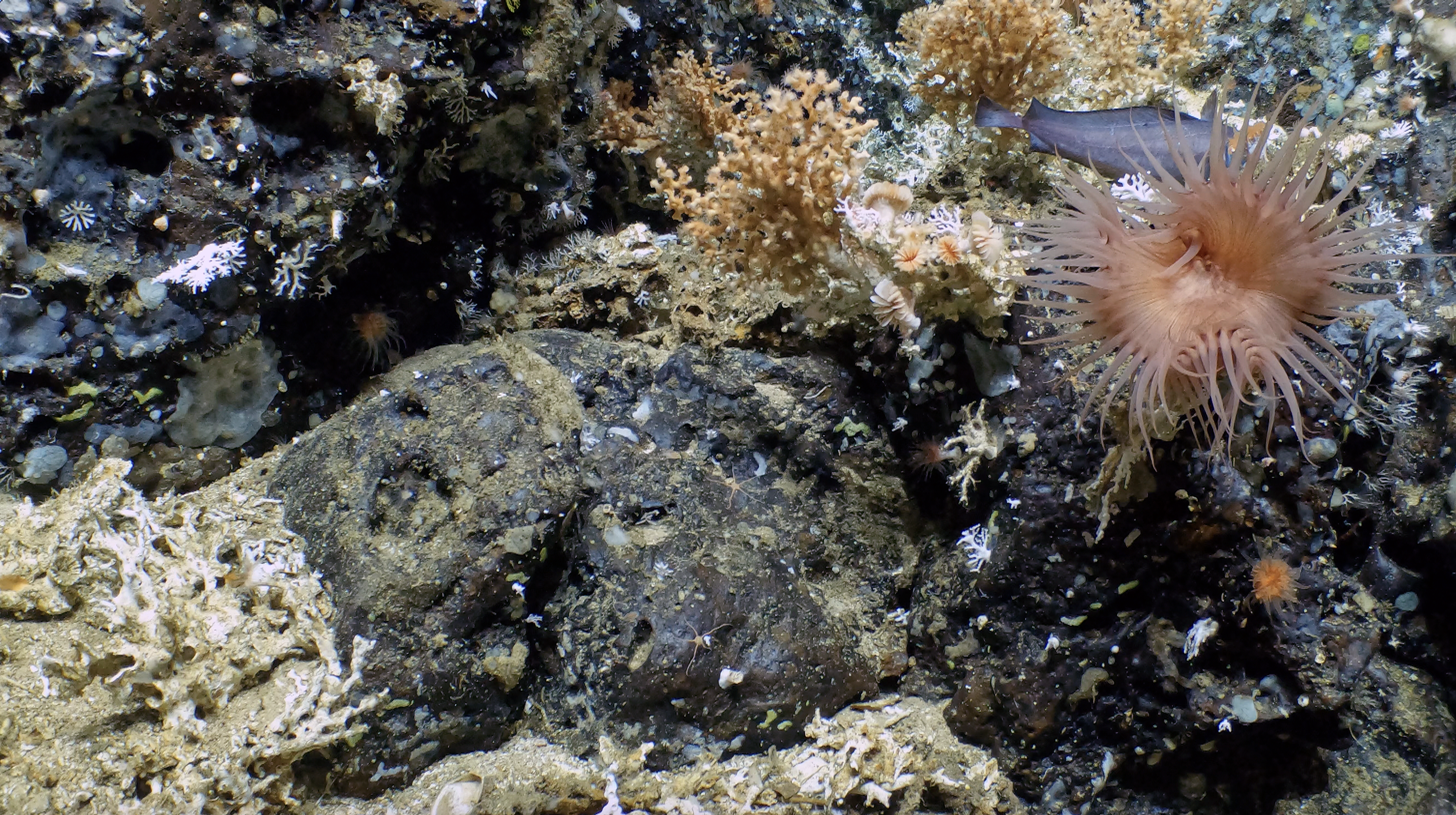Already holding a precious place in biological history, the Galápagos Islands just gained a whole new level of interest with the discovery of a thriving, pristine reef more than 400 meters beneath the surface.
A four-week mission to explore the waters around the Galápagos islands has struck scientific gold almost immediately, with a reef lying 400-600 meters (1,300-2,000 feet) beneath the surface of the Galápagos Marine Reserve. The biology of the reef will take some time to explore, but may prove as distinctive as the islands above.
Since Darwin, the Galápagos Islands have drawn biologists keen to study the way the archipelago’s climatic diversity has birthed new species. The surrounding seas have been much less studied, with only 5 percent explored using modern techniques. It’s only two years ago that we learned why these waters are so nutrient-rich. Galápagos Deep 2023 aims to rectify this, bringing the deep-sea submersible Alvin to explore the waters at depths scuba divers can’t reach.
On one of the first dives, the international team conducting the exploration found a reef covering the crest and slopes of an underwater volcano. The islands were known to have coral reefs before, but these are shallow, and vulnerable to extreme weather conditions. Most were destroyed in the 1982-83 El Niño, when water temperatures spiked, and have not recovered. However, deep water reefs have previously been shown to be more resilient in the face of such events.

Anemone on rock with some Madrepora coral, thriving at depth. Image credit: L. Robinson (U. Bristol), D. Fornari (WHOI), M. Taylor (U. Essex), D. Wanless (Boise State U.) NSF/NERC/HOV Alvin/WHOI MISO Facility, 2023 ©Woods Hole Oceanographic Institution
Jose Antonio Dávalos, Ecuador’s Minister for the Environment, said in a statement: “This is encouraging news. It reaffirms our determination to establish new marine protected areas in Ecuador and to continue promoting the creation of a regional marine protected area in the Eastern Tropical Pacific. The richness of the yet explored depths of our ocean is another reason to strive towards achieving the commitments of the Global Ocean Alliance 30x30, which aims to protect at least 30% of the world's oceans by 2030”.
“The captivating thing about these reefs is that they are very old and essentially pristine, unlike those found in many other parts of the world’s oceans,” said Dr Stuart Banks of the Charles Darwin Foundation. Besides hopefully preserving many species that are endangered or extinct elsewhere, Banks noted the Galápagos reefs provide a baseline of a healthy reef that can be used to help restore damaged reefs.
Deep sea corals grow more slowly than those closer to the surface and can reach great ages. Like tree-rings, coral growth patterns can reveal historical climates, and the team hope to use old corals to fill in gaps in our knowledge of abrupt climate shifts.
.png)
Alvin’s manipulator arm collects samples from waters populated by cold water corals, squat lobsters, anemones, basket stars and deep-sea fish. Image credit: L. Robinson (U. Bristol), D. Fornari (WHOI), M. Taylor (U. Essex), D. Wanless (Boise State U.) NSF/NERC/HOV Alvin/WHOI MISO Facility, 2023 ©Woods Hole Oceanographic Institution
Deep sea reefs usually have much lower coverage with living coral than healthy reefs in shallow water, simply because so little sunlight penetrates down that far. The newly discovered reef is an exception. Dr Michelle Taylor of the University of Essex noted parts of it have 50-60 percent live coral coverage, compared to the 10-20 percent seen in reefs of similar depth elsewhere. The result is an abundance of fish and thriving invertebrate species.
The Galápagos Deep 2023 blog reports the collection of samples beginning on the first day of Alvin’s exploration, however, it’s too soon to know if any previously unknown species have been found.
Prior to the start of the mission Dr Samuel Mitchell of the University of Bristol stressed the interdisciplinary nature of the team. As an example of the questions the mission hopes to answer he said in a statement, “Do different lava flows on the seafloor control how and where corals grow? We honestly have no idea.”
Having famously explored the Titanic, Alvin can go far deeper than the reef it has so far discovered, and there are plans to reach depths of 3,000 meters (10,000 feet) on this mission.




Recommended Comments
There are no comments to display.
Join the conversation
You can post now and register later. If you have an account, sign in now to post with your account.
Note: Your post will require moderator approval before it will be visible.